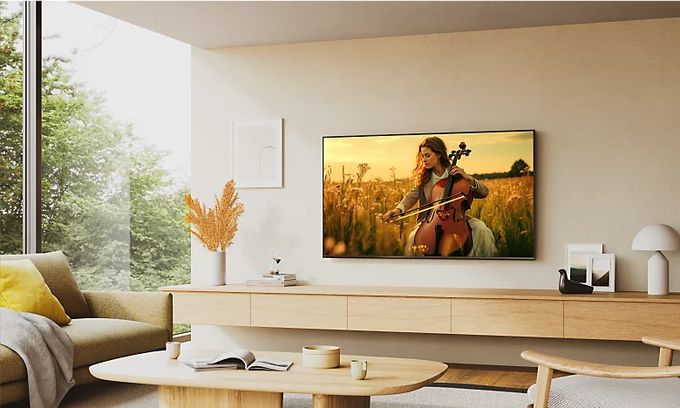Just a few years ago, the rapid advances in projectors and LED panels, ensured their dominance in the large-screen home theater segment. Indeed, the growth of their main specs is impressive.
In particular, brightness levels of 2,000 ANSI lumens are already common even among mid-price projectors, providing good color saturation even in diffuse daylight.
Rapid advances in video processing are successfully solving the traditional problem of projector contrast. As known, only very expensive LCoS (Liquid Crystal on Silicon) models provide superb contrast. Until recently, the success of DLP and 3LCD technologies was considerably more modest. But today, several developers are already successfully solving this problem. This list includes, for example, the AI-based Enhanced Black Level (EBL) feature in the in the Valerion VisionMaster Pro2/Max and Dynamic Black Level Enhancement (DBLE) in the newest XGIMI Horzon 20 Series. To avoid accusations of incorrect terminology, the developers call it ‘Viewing Contrast’.
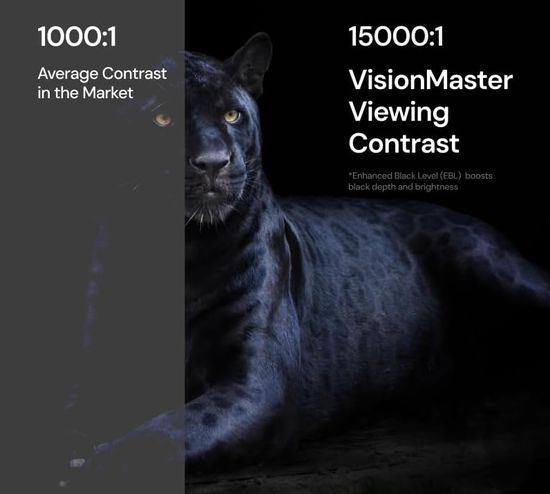
As a result, sufficiently high brightness and contrast provide acceptably high image quality for projections up to 150″ diagonally. Prices for models in this class range from $ 2,000 to $ 6,000.
Affordable MicroLED panels are unlikely to enter the mass market anytime soon. Today companies offer modular MicroLED panels with superb picture quality, but at exorbitant prices from $ 100,000, which are used primarily in advertising. However, LED panel manufacturers are demonstrating significant success. In particular, at InfoComm 2025, AWALL presented CoB MicroLED Display. Today, the most affordable 75-inch version with 1.2 pixel pitch costs $ 16,600, which is significantly closer to the mass market.
Huge TVs
But unwilling to lose a promising market segment, TV industry leaders accepted the challenge of competitors. Within a few years, were offering massive 100-inch TVs at quite affordable prices ranging from $ 2,000 to $ 6,000.
Moreover, they utilize all the latest technologies, including quantum dot technology (increased brightness, expanded color gamut, and improved color accuracy) and FALD (full-array local dimming), including with miniLED-based backlight (superb contrast). For example, this year’s list of new products includes the 98-inch Samsung DU9000 (~$ 1,700), TCL QM6K (~$ 2,200) and Hisense 100U8K (~$ 2,460).
Furthermore, this list has expanded to include Japanese giant Sony, which introduced the 98-inch Sony BRAVIA 5 K-98XR50, priced at ~$ 4,300.
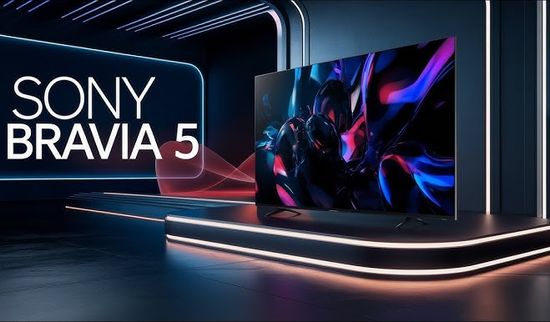
In addition, some sellers are offering it on Amazon for $ 4,000. It’s essentially an updated version of the Sony X90L/X90CL from 2023, offering miniLED-based local dimming. The company’s website lists the 98-inches X90L at a price a couple hundred dollars higher than its successor ($ 4,500 versus $ 4,300). The price difference for the 65-inch models is also insignificant, at ~$ 1,000 for the BRAVIA 5 vs ~$ 900 for the X90L.
However, the 98-inch BRAVIA 5 differs significantly from the 65-inch model. Therefore, an objective analysis requires several comparisons, including:
– Sony X90L vs Sony BRAVIA 5 (65-inches TVs);
– 65-inch BRAVIA 5 vs 98-inch BRAVIA 5;
– X90L vs BRAVIA 5 (98-inches models).
Sony X90L vs Sony BRAVIA 5 (65-inch)
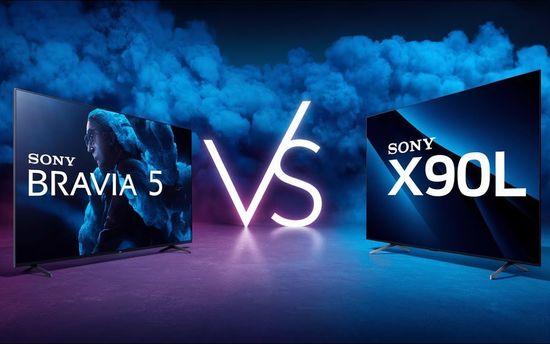
HDR Brightness nits (cd/m²)
– peak 2% window – 1,141 vs 617 nits;
– 10% – 1,254 vs 769 nits;
– 50% – 765 vs 600 nits;
– 100% – 715 vs 485 nits.
The Sony X90L’s HDR brightness is significantly higher. The BRAVIA 5 successfully plays highlights only in dim and moderately lit scenes. HDR brightness in game mode is almost identical.
SDR Brightness
– peak 2% window – 1,129 vs 651 nits;
– 10% – 1,261 vs 703 nits;
– 50% – 728 vs 555 nits;
– 100% – 720 vs 454 nits.
The X90L’s superb peak brightness in SDR is enough to overcome glare even in a very bright room. The Sony BRAVIA 5 also has good SDR brightness and overcomes glare in well-lit rooms. But it’s dimmer vs 2023 model.
Contrast / Native Contrast
– 49,776: 1 / 4,163: 1 vs 53,587: 1 /4,459 : 1.
Despite a miniLED backlight with more dimming zones in the BRAVIA 5, both models provide roughly the same contrast in most scenes.
Black Uniformity with local dimming
– Std. Dev. (standard deviation) – 1.391% vs 0.781% (good value < 0.6%).
It affects the playback of dark scenes in a dark room.
Native Black Uniformity
– Native Std. Dev. – 0.946% vs 2.010% (good value < 0.6%).
Without local dimming, both TVs have a bluish tint on their screens. However, local dimming makes black areas much deeper. The X90L can reproduce images with slight blurring due to the relatively large size of its local zones. To be fair, despite using miniLED with a significantly smaller zone area, blooming and cloudiness around some highlights are also present in the BRAVIA 5.
Other specs
SDR Color Volume
– CIELAB DCI-P3 Coverage – 89.46% vs 90.34%;
– CIELAB BT.2020 Coverage – 69.38% vs 68.15%.
SDR (Standard Dynamic Range) color volume reflects a display’s ability to show colors accurately across all its brightness levels.
SDR is traditionally based on the Rec. 709 color space, while HDR uses wider color gamuts like DCI-P3 or Rec. 2020 and a much higher peak brightness.
Both TVs have good DCI-P3 coverage, but mediocre for BT.2020, which may reduce color accuracy in some scenes.
HDR Color Volume
– 10,000 cd/m² BT.2020 Coverage ITP – 42.8% vs 35.3%.
HDR color volume refers to a display’s ability to show a wide range of colors at different brightness levels, creating a realistic picture. A monitor with good HDR color volume can display both very bright, saturated colors and very dark colors with greater accuracy and detail. This is critical for HDR content. By this criterion, the X90L is slightly better.
SDR Pre/Post calibration color accuracy
– white balance dE 2000 – 3.14 vs 2.60 / 0.17 vs 0.26 (good value < 3);
– color dE 2000 – 1.52 vs 2.17 / 0.98 vs 1.80 (< 3);
– Gamma – 2.60 vs 2.30 / 2.20 vs 2.20 (2.1-2.3);
– Color Temperature – 6,506 K vs 6,893 K / 6,503 K vs 6,454 K (6,500 standard).
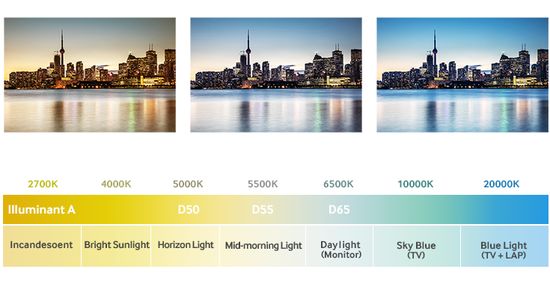
Both TVs are almost perfectly calibrated out of the box.
HDR Pre/Post
– white balance dE ITP – 3.91 vs 10.67 / 3.03 vs 3.80 (< 9);
– color dE ITP – 4.3 vs 12.6 / 4.00 vs 5.00 (< 9);
– color temperature – 6,601 K vs 7,668 K / 6,461 K vs 6,644 K (6,500 standard).
Both TVs are well calibrated out of the box. However, adjusting some parameters was also helpful.
65″ vs 98″ BRAVIA 5
Despite the same technologies used, image quality may vary depending on the panel size. In our case, both BRAVIA 5 models have the same image processing capabilities, almost identical reflection handling, and very similar color accuracy. But Brightness, Black Levels, Color Volume and Pixel Response Times are different. However, future firmware updates may make adjustments.
Black Levels
They affect contrast, black uniformity, lighting zone precision, and lighting zone transitions.
Contrast
Contrast / Native contrast (ratio between the darkest black and the luminance of the brightest white) – 53,587:1 vs 99,225:1 / 4,459:1 vs 4,165:1.
While White Level is virtually identical, Lowest Average Black Level differs significantly (0.00375 vs 0.002 nits). As a result, the 98-inch model delivers ~47% greater black depth, which is important for viewing in a dark room. This effect is likely due to the density of local dimming zones per square inch. Simply put, each zone on a 98″ TV covers a larger screen area.
Zone precision
It affects the black depth around the highlights and depends on the local dimming algorithm and the number of dimming zones.
65″ vs 98″ – 384 vs 720 (zones) / 21,539 vs 11,520 (pixels per zone) / 4.7 vs 5.7 (zone size, in²) / 4,583 vs 2,021 (pixels per in² per zone).
The local dimming algorithm operates per zone, so the precision mainly depends on the physical zone size, which is larger in 98″ TV.
HDR Brightness (nits or cd/m²)
– peak 2% window – 617 vs 921;
– 50% – 600 vs 943;
– 100% – 485 vs 686.
The SDR brightness of the 98-inch model is also higher in a similar proportion. The difference is due to the physical size of the pixels, which are larger in the 98″ TV.
Sony BRAVIA 5 98″ vs X90L 98″
Both models:
– Cognitive Processor XR – content-optimized settings, Full Array LED backlight control, audio and video track synchronization, 4K upscaling, VRR support;
– 40W 5.1.2ch Sony Acoustic Multi-Audio system.
Sony Acoustic Multi-Audio technology synchronizes sound with the position of its source on the screen using multiple TV speakers;
– Google TV.
TVs support all popular streaming apps, including Netflix, Disney+, Amazon Prime Video, and Apple TV+;
– Sony’s optional BRAVIA Cam support.
It uses AI to optimize brightness, color temperature, and audio settings depending on the viewer’s location.

– Input Lag ~10ms for 4K@120Hz in Game Mode;
– peak HDR Brightness more than 1,000 nits;
Differences:
– Display Technology – miniLED – based backlight with XR Backlight Master Drive (720 zones) vs FALD (Full-array local dimming, 80 zones).
Sony’s XR Backlight Master Drive technology is a local dimming algorithm to control thousands of mini LEDs with high precision, increasing overall image contrast.
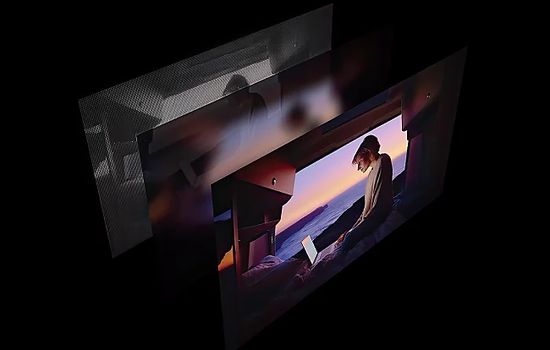
– Contrast Performance – minimal blooming with almost ideal black vs good contrast, but with blooming in high-contrast scenes;
– VRR (Variable Refresh Rate) eliminates screen tearing and provides a smoother gaming experience – HDMI Forum VRR + G-SYNC compatibility vs HDMI Forum VRR only;
– Smart TV OS – Google TV OS v12 (latest features) vs Google TV OS.
Key Features in Android TV 12:
– 4K interface;
– automatic frame rate switching for video: 24, 50, or 60 Hz;
– improved security and privacy features (camera/microphone indicators and usage history);
– expanded access to apps.
Conclusion
The comparison results demonstrate:
– the price-quality ratio of the 65-inch Sony X90L and BRAVIA 5 is virtually identical. At nearly identical in price (~$ 900 vs $ 1,000), the X90L is brighter, while the BRAVIA 5 is slightly more contrasty. Other differences are minimal and practically unnoticeabl. Therefore, the choice depends on secondary factors, including, of course, discounts;
– despite using the same technologies, the 98″ BRAVIA 5 significantly outperforms the 65″ model. It’s brighter, has higher contrast, wider color volume, lower pixel response time, etc;
– 98-inch X90L vs 98-inch BRAVIA 5
Pricing information is a bit confusing:
– $ 4,500 for X90L vs $ 4,300 for BRAVIA 5 on the company’s website;
– some US sellers offer the 98-inch BRAVIA 5 for $ 4,000, while the X90L can cost up to $ 3,500. However, pricing typically varies by region. For example, the X90L’s price in India is ~ $ 4,400.
But considering the same price, the new 98-inch BRAVIA 5 offers significantly higher contrast thanks to its miniLED backlight with XR Backlight Master Drive technology. Furthermore, it runs the latest Google TV OS v12 and is G-SYNC compatible. These bonuses are quite enough to make a choice in its favor. However, a price reduction on the X90L could change the situation.
To be fair, the 98-inch Sony BRAVIA 5 is traditionally more expensive than its main competitors, including huge models from Samsung, Hisense, and TCL. But the price difference is quite adequate to the Japanese giant’s decades-long impeccable reputation.
This video introduces the new Sony BRAVIA 5 miniLED TV.
